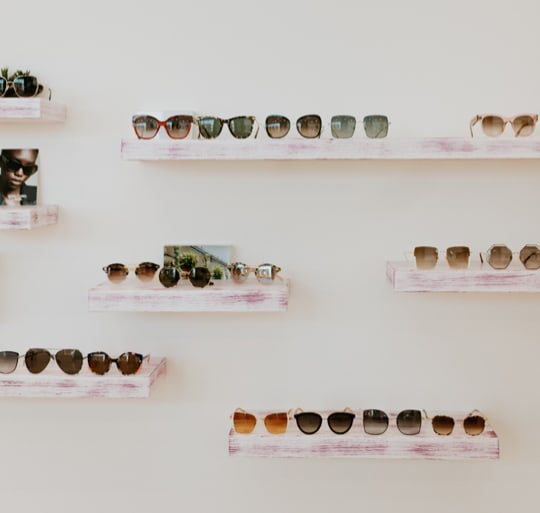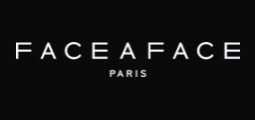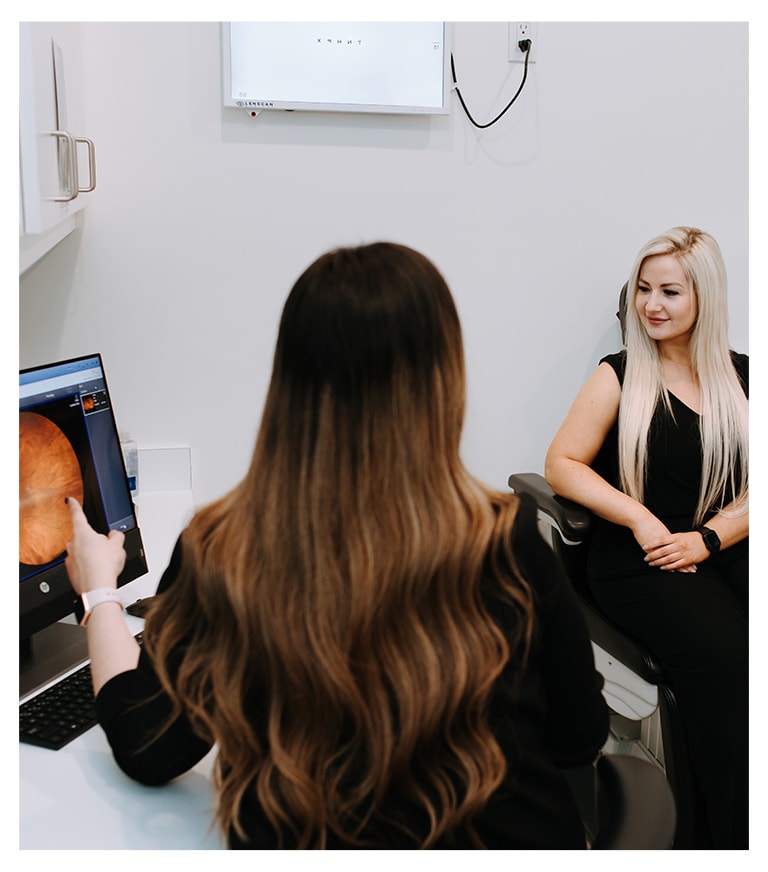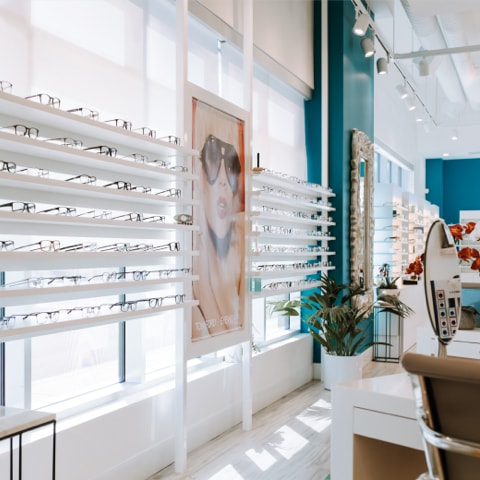Detecting & Diagnosing Eye Diseases
An eye exam is an important part of preventive healthcare. Not only will your optometrist assess if your eyewear prescription is providing the vision you want, they’ll also check for the development of eye diseases.
Many eye diseases can damage your vision permanently and many progress without any noticeable symptoms, particularly in the beginning. Early identification is crucial to the treatment and management of eye diseases. If your optometrist spots them early enough, they may be able to slow down progression or prevent vision loss. We offer in-office follow-up and can refer you to a recommended surgeon when medical interventions are needed.
Your sight is precious. Safeguard it today with a comprehensive eye exam.
Book Appointment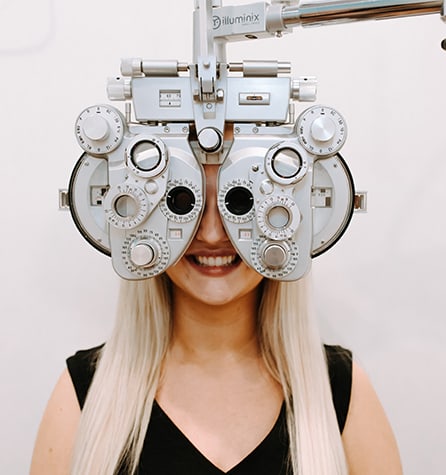
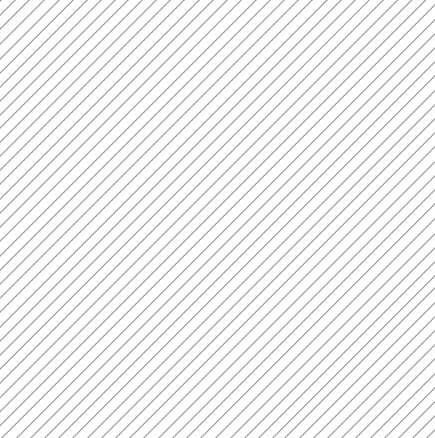
Diabetic Eye Diseases
People with diabetes are at an increased risk of eye diseases. Diabetic retinopathy and diabetic macular edema can lead to irreversible vision loss.
Diabetic retinopathy often progresses slowly and, like many eye diseases, may not present visible symptoms until irreversible vision loss occurs. Diabetic macular edema is a serious eye condition and can impact the ability to read, write, drive, and recognize faces.
Both conditions can be identified early with a comprehensive diabetic eye exam. If you have diabetes, book your appointment now.
Book AppointmentGlaucoma
Glaucoma is a group of eye diseases generally characterized by damage to the optic nerve, often because of high intraocular pressure.
Pressure builds up inside the eye, damaging the optic nerve and causing irreversible vision loss. Often, the progression of glaucoma is slow and symptom-free, earning the disease the nickname "the silent thief of sight."
There are several types of glaucoma.
Open-Angle Glaucoma
Fluid buildup caused by blockage of the eye’s drainage channels can increase intraocular pressure (IOP) and cause open-angle glaucoma. Generally, peripheral vision is the first thing impacted, followed by central vision.
Angle-Closure Glaucoma
Angle-closure glaucoma occurs when the space between the iris and cornea narrows, trapping fluid in the eye. When the pressure rises as a result of this fluid, angle-closure glaucoma occurs.
It can appear suddenly (acute) or progress gradually (chronic). Acute angle-closure glaucoma is a medical emergency. Sudden onset headaches, blurry vision, eye redness, or halos appearing around lights mean you should call your optometrist immediately.
Other Types of Glaucoma
Secondary glaucoma occurs when intraocular pressure is caused by eye trauma, injury, or infection.
When the optic nerve is damaged but intraocular pressure remains within normal range, normal-tension glaucoma may be the cause.
Glaucoma Risk Factors
Glaucoma risk factors may include:
- A family history of glaucoma
- Past eye injury or trauma
- Use of certain medications
- Heart disease, diabetes, or high blood pressure
- Some eye conditions
Cataracts
As you age, the clear lens of your eye can harden and become opaque. This is called a cataract. They are often the result of the normal aging process, though they can appear congenitally in children.
At our practice, we can detect and monitor the signs and symptoms of cataracts to help you manage your vision. When necessary, we can also refer you to an ophthalmologist who can perform cataract surgery.
Symptoms of Cataracts
Cataracts generally develop without pain or redness. Some symptoms of cataracts include:
- Foggy or blurry vision
- Difficulty seeing at night
- Seeing halos around lights
- Muted color vision
- Sensitivity to light
Preventing Cataracts
Cataract growth can be slowed by protecting the eyes from UV rays. A great pair of sunglasses can help. Eating foods rich in antioxidants like blueberries, apples, artichokes, and dark green veggies like kale and broccoli may also help to prevent cataracts.
Cataract Treatment
Often, obstructions to vision as a result of cataracts can be remedied through corrective lenses. But, cataracts can increase in size and may get to a point where glasses or contact lenses no longer provide the vision you want. In this case, we may recommend surgery.
If you’re having a difficult time driving or performing your job safely, are struggling to watch television or read, or are experiencing challenges with daily activities that are decreasing your quality of life, it might be time to explore surgery.
Cataract surgery is safe and effective. We can help you understand the procedure and your options.
Age-Related Macular Degeneration
Age-related macular degeneration (AMD) causes the breakdown of the macula, the area of the eye responsible for central vision. Damage to the macula can lead to central vision loss.
Central vision is responsible for reading, writing, driving, and recognizing faces, so any loss of vision in this area may make day-to-day tasks difficult.
People with AMD may not experience any pain or symptoms as the disease progresses. If straight lines begin to appear wavy or your central vision blurs in a way that cannot be corrected by glasses, it’s time for an eye exam.
There are 2 types of AMD, dry and wet.
Dry AMD
We’re on the Lookout for Early Signs of Eye Disease
Regular comprehensive eye exams are the best defence against eye diseases that can cause irreversible vision loss.
Book your appointment today and let us examine your eyes for early signs of eye disease.
Book AppointmentVisit Us in Saskatoon
Kennedy Eye Clinic
You can find us inside the Lakeside Medical Building on Mckercher and College Drive, with plenty of parking available out front.
We’re closed on long weekends.
By texting the number listed below, you agree to receive messages from Kennedy Eye Clinic. Msg & data rates may apply. Message Frequency varies. Unsubscribe at any time by replying STOP. Reply HELP for help.
- Phone: 306-952-6464
- Fax: 306-952-6465
- Email: [email protected]
- 100-215 Joseph Okemasis Drive
- Saskatoon, SK S7N 3A8
Hours
- Monday: 8:00 AM – 6:00 PM
- Tuesday: 8:00 AM – 6:00 PM
- Wednesday: 8:00 AM – 6:00 PM
- Thursday: 9:00 AM – 7:00 PM
- Friday: 9:00 AM – 5:30 PM
- Saturday: 9:00 AM – 3:00 PM
- Sunday: Closed
The Eye Studio by Kennedy Eye Clinic
You can find us on 8th Street East, we share a building with Saskatoon Dental House. There is lots of free parking out front.
We’re closed on long stat weekends.
By texting the number listed below, you agree to receive messages from Kennedy Eye Clinic. Msg & data rates may apply. Message Frequency varies. Unsubscribe at any time by replying STOP. Reply HELP for help.
- Phone: 306-986-5550
- Fax: 306-868-5551
- Email: [email protected]
- 120-619 8th Street East
- Saskatoon, SK S7H 0R1
Hours
- Monday: 8:00 AM – 6:00 PM
- Tuesday: 8:00 AM – 6:00 PM
- Wednesday: 8:00 AM – 6:00 PM
- Thursday: 9:00 AM – 7:00 PM
- Friday: 9:00 AM – 5:30 PM
- Saturday: Closed
- Sunday: Closed
Our Brands
